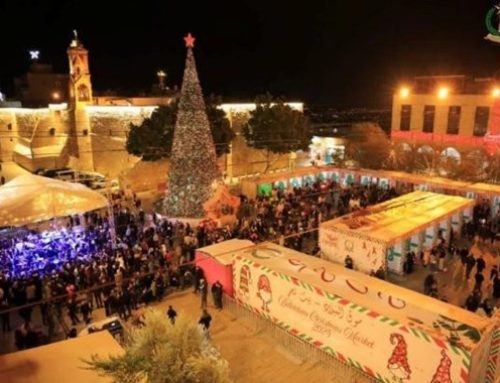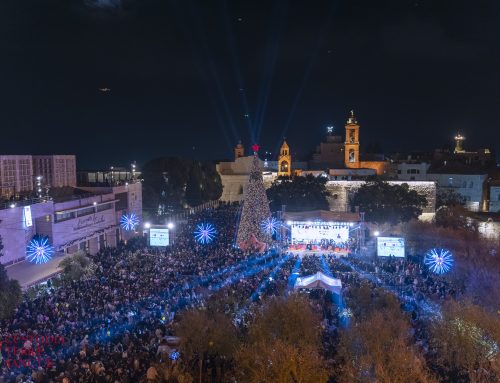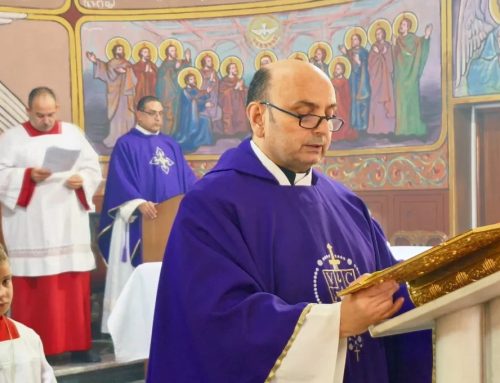Jordan is not always thought of when it comes to pilgrimage to the Holy Land.
Yet the Hashemite Kingdom, with its varied landscapes, whether desert, mountainous or verdant, is home to many historical sites of great importance to Christians. Indeed, it was there that Christ received his baptism, that St. John the Baptist was imprisoned and beheaded on the orders of King Herod Antipas, and where, centuries before the birth of Jesus, Moses saw the Promised Land from Mount Nebo before dying.
These priceless locales of biblical episodes have been, together with a number of other important Christian sites, the object of particular attention from the country’s authorities in recent years. These Jordanian officials are seeking to enhance the Christian heritage treasures through a series of ambitious renovation and development projects for which they are providing the lion’s share of funding, hoping to promote quality Christian tourism and thereby boost their nation’s economy — of which tourism represents about 30% and which has been has significantly affected by the recent COVID health crisis.
Located in the Middle East, bordering Israel, Syria, Iraq and Saudi Arabia, this Arabic-speaking land once trodden by Christ saw the birth of the oldest Christian communities in the world.
Christians in Jordan have made few headlines in the West in recent years because, unlike their brothers and sisters in Iraq, Syria and Palestine, they enjoy a stable political situation and a relatively favorable environment, despite the challenges posed by their very small minority position in this country, which is approximately 96% Muslim.
Vital Presence
A 2016 report produced by Jordanian Bishop Maroun Lahlam for the association L’Oeuvre d’Orient estimated that Christians in Jordan, mostly from the Greek Orthodox and Latin Catholic Churches, now represent some 3% of the population. This number is considerably lower than at the beginning of the last century, when they represented more than 20% of the population, with the sharp decline being due to demographic reasons as well as to the higher emigration rate of Christians to the West for economic reasons. This percentage has increased slightly in recent years, however, with the immigration of Christians from neighboring countries fleeing war and persecution.
The Christian community, though a minority, still holds a position of intellectual and economic significance in the country. According to Lahlam, the Christian community alone accounts for 30% of the country’s economy, 9% of the members of Parliament and 6% of the Senate.
“Despite their small number, Christians have never been on the margins of Jordanian society,” Jordanian Tourism Minister Makram Mustafa Queisi told the Register on the sidelines of an April 17 official meeting in Amman with Bishop Jean-Marc Micas of Tarbes and Lourdes.
The meeting took place as part of the April 16-21 visit sponsored by the Jordan Tourism Board, an independent government agency, during which the French bishop was introduced to various Christian holy sites in the country.
“Christians have always been in the depths of our society, an integral part of its past, present and future,” Queisi added, emphasizing their special service to society as a whole, especially in the field of education, in which the Catholic Church is particularly involved. Catholic schools, which also have a large number of Muslims in their ranks, are among the most prestigious educational institutions in the country.
“The Christian community also carries out a charitable mission by helping the sick, the poor and refugees through many social institutions,” he said.
Protecting Christian Heritage
It is also partly to reconsolidate this long-standing presence that the Jordanian government has initiated a series of projects to preserve and enhance the Christian heritage, encouraging at the same time the influx of Western Christian tourists.
Many major Christian sites have been discovered or officially identified in recent decades through extensive archaeological excavations, after having been left to decay for centuries. For example, the ancient biblical site of Machaerus, the desert fortress of Herod Antipas and the place of imprisonment and execution of St. John the Baptist, was discovered in 1968, and its excavation was completed in 2018.
Bethany Beyond the Jordan, the place where Jesus was baptized by John the Baptist, was formally identified some 20 years ago and classified as a UNESCO World Heritage Site. It has been since then the subject of extensive enhancement work carried out by the Jordanian authorities and transformed into a natural tourist park that is still in expansion.
Amer Twal, director of religious tourism at the Jordan Tourism Board, told the Register that one of the major restoration projects currently underway is at the Aqaba Church, a third-century Byzantine mud-brick monument considered one of the oldest Christian churches discovered to date. The work, carried out in collaboration with the American Center of Research in Jordan, will be funded by the Ministry of Tourism.
The Jordan Tourist Board is also working in cooperation with the Greek Orthodox Church on a restoration project of the remains of a large Byzantine church at the archaeological site of Mar Elias in Aljoun, which is believed to have been the birthplace of the prophet Elijah.
Because of its historical role as custodian of the holy places of Jerusalem, the Jordanian royal family enjoys a special respect among the Christians of the Holy Land and the rest of the world when it comes to the preservation of their heritage, particularly endangered elsewhere in the region in recent years. In 2016, King Abdullah II also helped fund the renovation of the tomb of Christ in the Church of the Holy Sepulchre in Jerusalem.
“We want to convey to the world the message that Jordan is special, as Muslims and Christians never simply ‘coexisted’ here — we don’t even use that word. We’ve been living together uninterruptedly for centuries,” said Queisi during the April 17 meeting. “This is a peculiarity of our society: We love it; we believe in it; we live it on a daily basis.”
From Lourdes to Na’our
This lived identity also took symbolic form in the Hashemite Kingdom’s support for the construction of a shrine dedicated to Our Lady of Lourdes in Na’our, in the Greater Amman Municipality, in 2015.
Since then, the government has been seeking to promote a twinning agreement between the famous shrine in southwestern France, where the Virgin Mary appeared to Bernadette Soubirous in 1858, and the shrine in Na’our, which has an exact replica of the grotto in Lourdes.
Such a request did not leave Bishop Micas unmoved. Speaking with the Register during his visit to the Jordanian shrine on April 18, the bishop of Lourdes and Tarbes indicated that he was supportive of a special form of partnership between the two places, although a proper twinning agreement will be difficult to reach. Indeed, the prelate specified that, for the Church hierarchy to allow an official twinning, the two sites involved must be of equivalent international scope, as in the case of a Marian apparition.
“We have so much to learn from the fervor of the Christians of Jordan, which has moved me so much since my arrival, and I have always believed that if we were able to bring peace to the Middle East, we would be able to bring peace to the whole world,” he said. “That is why I am ready to study the different options that would allow us to strengthen the ties between Lourdes and this unique site.”
At the same time, while he praised the Jordanian government’s efforts to improve the experience of international pilgrims, Bishop Micas warned of the potential harms of developing mass tourism, as he experiences daily the excessive commotion and noise around the shrine of Lourdes, which ends up obstructing access to the grotto. “This is a mistake that should be avoided in Jordan, always making sure to let the places exist by themselves in their authenticity, and let them speak.”
“The holy places are places of the incarnation of God, who thus gave himself to be known to man,” he concluded. “We cannot by ourselves impel a dynamic, in that it is contained in the message itself.”
BY:ncregister






